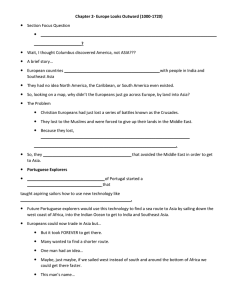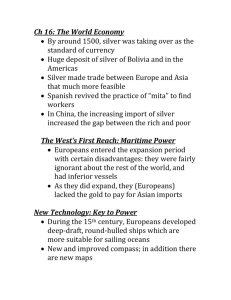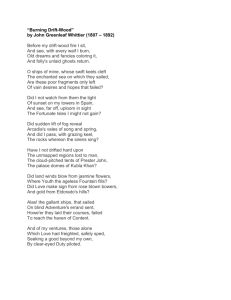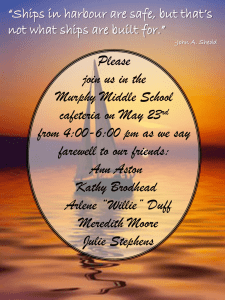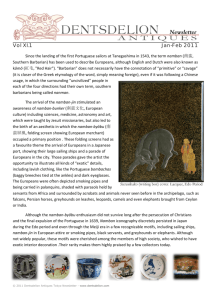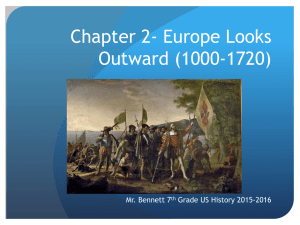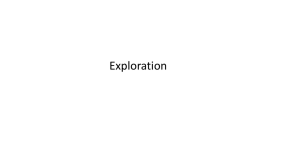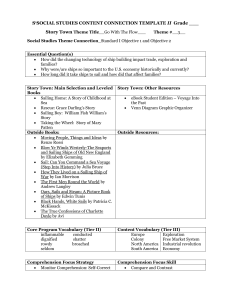Social Studies, Chapter 3, Lesson 3 Outline
advertisement
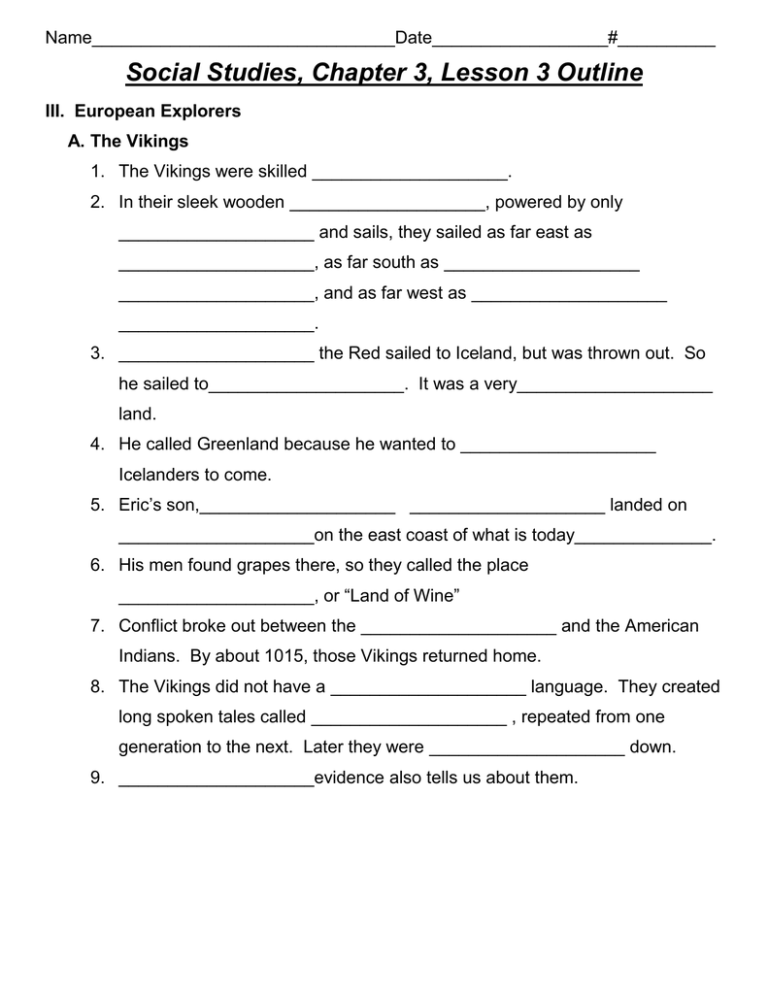
Name_______________________________Date__________________#__________ Social Studies, Chapter 3, Lesson 3 Outline III. European Explorers A. The Vikings 1. The Vikings were skilled ____________________. 2. In their sleek wooden ____________________, powered by only ____________________ and sails, they sailed as far east as ____________________, as far south as ____________________ ____________________, and as far west as ____________________ ____________________. 3. ____________________ the Red sailed to Iceland, but was thrown out. So he sailed to____________________. It was a very____________________ land. 4. He called Greenland because he wanted to ____________________ Icelanders to come. 5. Eric’s son,____________________ ____________________ landed on ____________________on the east coast of what is today______________. 6. His men found grapes there, so they called the place ____________________, or “Land of Wine” 7. Conflict broke out between the ____________________ and the American Indians. By about 1015, those Vikings returned home. 8. The Vikings did not have a ____________________ language. They created long spoken tales called ____________________ , repeated from one generation to the next. Later they were ____________________ down. 9. ____________________evidence also tells us about them. B. The Renaissance 1. In____________________, a new age was beginning. It was known as the ____________________, a word that means ____________________. 2. It marked the beginning in ____________________ and ____________________and a desire to____________________ more about the world. 3. Italian cities, like Venice, had become centers of____________________ with places in other parts of the world. The ____________________ this trade created helped to support the ____________________ and ____________________. 4. Italians studied the learning of____________________European cultures, such as the ____________________and____________________, and of other cultures in the world, such as the____________________and ____________________. 5. The Renaissance spread to other parts of____________________. In Germany in about 1450, ____________________ ____________________ developed a ____________________ ____________________, a machine that made it possible to ____________________ large numbers of books. This invention allowed books to become available to many more readers. Now new ____________________ could spread quickly. 6. Other advances came in ____________________ design and ship ____________________. Europeans adopted the____________________ ____________________from the Chinese and the____________________ from Muslims. 7. Europeans made their ships____________________ and ____________________. This allowed them to____________________ farther and farther from Europe. C. The Portuguese Explore the African Coast 1. Problems getting goods from Asia sparked a drive to find new ____________________routes to Asia. 2. Beginning in the 1420’s, ____________________took the lead. The king’s son, Prince____________________, gathered the best and most experienced sea ____________________, ____________________, ship____________________, and other experts. They shared their knowledge to hire____________________ and design ships that could develop new sea____________________. 3. To guide ships along the way, they used improved methods of____________________. 4. On each voyage, ____________________traveled farther than the last, ____________________the African shore and____________________ sailing conditions. 5. Portugal’s ships began bringing home African____________________. 6. The Portuguese also profited from the ____________________ ____________________, the buying and selling of human beings. 7. Slave traders took captured people into and out of____________________ along the ____________________ trade routes. 8. The Portuguese and other Europeans began transporting ____________________ captives to Europe, where they became ____________________ or ____________________. 9. A slave is owned by a____________________ and has no____________________. D. A Sea Route to India 1. In 1488, ____________________ ____________________ discovered the ____________________ ____________________after his ships had been blown around the southern tip of____________________. 2. He called the tip of Africa, the “____________________ of ____________________”, but the king of Portugal renamed it the Cape of ____________________ ____________________. 3. In 1497, ____________________ de Gama and his four ships rounded Africa, sailed ____________________ across the Indian Ocean, and reached ____________________in 1498. 4. There they bought____________________ at low prices and shipped them back to ____________________. 5. Portugal’s sea routes made it a ____________________ trading ____________________. E. Exploration Continues 1. Advances in sailing gradually____________________ how far and how fast ships could ____________________. 2. By the late 1400’s, Europeans had established new ocean trade routes to ____________________ and ____________________. 3. The____________________ Hemisphere and the ____________________ Hemisphere were coming into lasting____________________ with each other.
